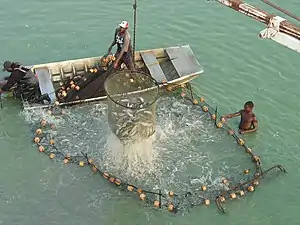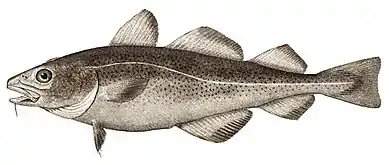
Catfish are easy to farm in warm climates, leading to inexpensive and safe food at local grocers. Catfish raised in inland tanks or channels are considered safe for the environment, since their waste and disease should be contained and not spread to the wild.[1]
One of the most cultured species of Catfish is the African mud Catfish (Clarias spp). This species is widely acceptable for rearing due to the following factors;
-High food conversion ratio: Its ability to convert food to flesh
- High adaptability: African mud Catfish can survive harsh environmental conditions
-High tolerance to stress: unlike most fishes, the catfish stress limit is significantly high making it a good culturable species.
-Fast growth rate: Irrespective of the target market, the time it takes for the African Mud Catfish to attain maturity is generally low. Whether the target market is for fingerlings, juvenile or table size production, The usual period of culture does not exceed three to six months.
-Ability to breed them artificially: Unlike some species, it is possible to induce breeding in the parent stocks of the African mud Catfish making them able to reproduce at any time or season of the year.
Asia
In Asia, many catfish species are important as food. Several airbreathing catfish (Claridae) and shark catfish (Pangasiidae) species are heavily cultured in Africa and Asia. Exports of one particular shark catfish species from Vietnam, Pangasius bocourti, has met with pressures from the U.S. catfish industry. In 2003, the United States Congress passed a law preventing the imported fish from being labeled as catfish.[2] As a result, the Vietnamese exporters of this fish now label their products sold in the U.S. as "basa fish".[3]
United States
Ictalurids are cultivated in North America, especially in the Deep South, with Mississippi being the largest domestic catfish producer.[4] Channel catfish (Ictalurus punctatus) supported a $450 million/yr aquaculture industry in 2003.[5]
The US farm-raised catfish industry began in the early 1960s in Kansas, Oklahoma and Arkansas. Channel catfish quickly became the major catfish grown, as it was hardy and easily spawned in earthen ponds. By the late 1960s, the industry moved into the Mississippi Delta as farmers struggled with sagging profits in cotton, rice and soybeans, especially on those farm areas where soils had a very high clay content.[5]
The Mississippi Delta became the industry home for the catfish industry, as they had the soils, climate and shallow aquifers to provide water for the earthen ponds that grow 360-380 million pounds (160,000 to 170,000 tons) of catfish annually. Catfish are fed a grain-based diet that includes soybean meal. Fish are fed daily through the summer, at rates of 1-6% of body weight with pelleted floating feed. Catfish need about two pounds of feed to produce one pound of live weight. Mississippi is home to 100,000 acres (400 km2) of catfish ponds, the largest of any state. Other states important in growing catfish include Alabama, Arkansas and Louisiana.[5]
Aquarium
There is a large and growing ornamental fish trade, with hundreds of species of catfish, such as Corydoras and armored suckermouth catfish (often called plecos), being a popular component of many aquaria. Other catfish commonly found in the aquarium trade are banjo catfish, talking catfish, and long-whiskered catfish.
See also
Notes
- ↑ Rogers, Paul. "Economy of Scales". Stanford Magazine. Stanford Alumni Association (March / April 2006). Archived from the original on 2008-06-11. Retrieved 2008-02-14.
- ↑ "L.A. Times, "'Catfish' bred in Asia move up on U.S. food chain", 28 November 2006".
- ↑ "Food Fight / U.S. accuses Vietnam of dumping catfish on the American market". sfgate.com. 8 February 2003. Retrieved 23 April 2018.
- ↑ J.E. Morris (October 1993). "Pond Culture of Channel Catfish in the North Central Region" (PDF). North Central Regional Aquaculture Center. Retrieved 2006-06-28.
{{cite journal}}: Cite journal requires|journal=(help) - 1 2 3 Lundberg, John G.; Friel, John P. (2003-01-20). "Siluriformes". Tree of Life Web Project. Retrieved 2007-04-18.


.png.webp)
